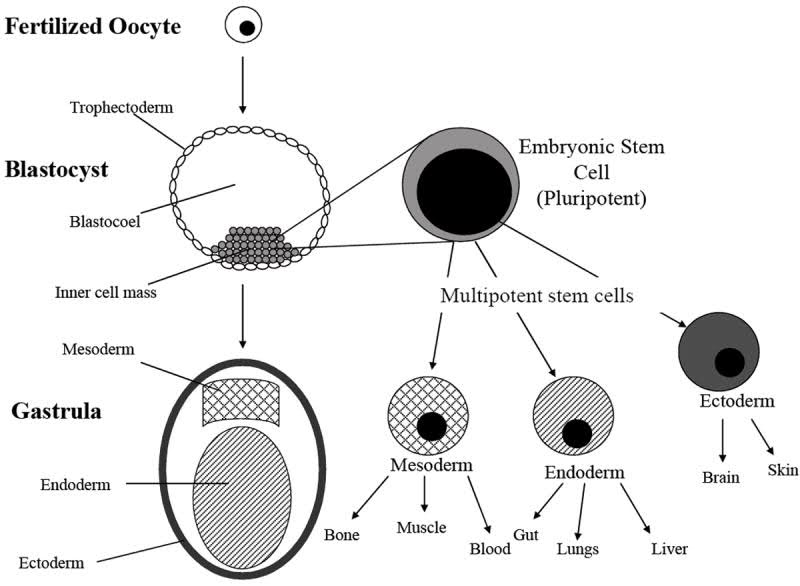If I had to describe an anomaly in two words, I would probably say “stem cells.” What are stem cells and why are they important? What role do stem cells play in regenerative medicine, and is it ethical to study them?
Stem cells are a type of cell found in the human body that can differentiate into a variety of specialized cell types. If we are able to harness the regenerative power of multipotent stem cells by altering the genome of certain stem cells via novel gene-editing techniques, we can use these cells to perform advanced organ regeneration procedures. The development and incorporation of CRISPR-Cas9 in this precise editing of genetic material could significantly enhance the regenerative capabilities of these stem cells, opening new pathways for organ regeneration in future clinical settings. They can also be used in stem cell transplants to help with blood transfusions in leukemia cases. Therefore, we can explore the various uses of stem cells to further investigate and critique complex tissue engineering and regenerative medicine techniques that are being studied today. Ultimately, studying these cells on a more substantial level could revolutionize common medical practices and treatments.
Stem cells are especially important due to their capacity for self-renewal and their ability to differentiate into different cell types. There are many different categories of stem cells, each of which follow a unique lineage and differentiation pathway. Three main groups of stem cells include induced pluripotent stem cells (IPSCs), embryonic stem cells (ESCs), and adult stem cells.
IPSCs and ESCs are both part of the overarching group of human pluripotent stem cells. IPSCs are derived from adult stem cells that have been genetically reprogrammed through forced gene expression into ESC-like cells. ESCs are derived from the inner cell mass of the blastocyst, which is a cluster of cells made by a fertilized egg that is rapidly dividing.
On the other hand, there exist different types of adult (somatic) stem cells, such as hematopoietic stem cells (blood stem cells), epithelial stem cells, neural stem cells, and many more that reside in terminally differentiated and specific tissue throughout your body. These adult stem cells are undifferentiated in nature but already committed to a specific lineage. Thus, they have the ability to renew themselves and replace the specific, damaged tissue type around them. However, there currently exists controversy in the studies of these cells, as some research suggests that they can only generate the cell types of the original differentiated tissue they live in, while other research suggests that these cells are more versatile in their regenerative capabilities. Which theory is accurate? That’s for future scientists to decipher.
With this deciphering comes a series of ethical concerns related to the study of embryonic stem cells. Following recent legal discussions on abortion regarding when exactly human life begins are disagreements between if the human embryo should be considered alive when studied in something like a petri dish. In research on human ESCs, human embryos must often be destroyed to be studied, which leads to great political controversy—some believe this research should not be legal, while others deem it necessary for the future of regenerative medicine.
Ultimately, stem cells have the potential to be the future of regenerative medicine, but they require more studies to fully illuminate the molecular mechanisms that govern regenerative differentiation. The question of whether these studies will be legally permitted now lies in the hands of policy makers nationwide.
References
- Biehl, J. K., & Russell, B. (2009). Introduction to stem cell therapy. The Journal of cardiovascular nursing. https://www.ncbi.nlm.nih.gov/pmc/articles/PMC4104807/
- Brown, P. T., Handorf, A. M., Jeon, W. B., & Li, W.-J. (2013). Stem cell-based tissue engineering approaches for musculoskeletal regeneration. Current pharmaceutical design. https://www.ncbi.nlm.nih.gov/pmc/articles/PMC3898459/#:~:text=The%20tissue%20engineering%20process%20begins,to%20grow%20tissues%20ex%20vivo.
- Hoang, D. M., Pham, P. T., Bach, T. Q., Ngo, A. T. L., Nguyen, Q. T., Phan, T. T. K., Nguyen, G. H., Le, P. T. T., Hoang, V. T., Forsyth, N. R., Heke, M., & Nguyen, L. T. (2022, August 6). Stem cell-based therapy for human diseases. Nature News. https://www.nature.com/articles/s41392-022-01134-4
- Jin, Y., Li, S., Yu, Q., Chen, T., & Liu, D. (2023, June 17). Application of stem cells in regeneration medicine. MedComm. https://www.ncbi.nlm.nih.gov/pmc/articles/PMC10276889/#:~:text=Stem%20cells%20are%20widely%20used,ability%20and%20ease%20of%20extraction.&text=Some%20stem%20cell%20treatments%20have,for%20skin%20and%20bone%20regeneration.
- Mahla, R. S. (2016). Stem cells applications in regenerative medicine and disease therapeutics. International journal of cell biology. https://www.ncbi.nlm.nih.gov/pmc/articles/PMC4969512/
- Poliwoda, S., Noor, N., Downs, E., Schaaf, A., Cantwell, A., Ganti, L., Kaye, A. D., Mosel, L. I., Carroll, C. B., Viswanath, O., & Urits, I. (2022, August 25). Stem Cells: A comprehensive review of origins and emerging clinical roles in medical practice. Orthopedic reviews. https://www.ncbi.nlm.nih.gov/pmc/articles/PMC9404248/
- Watt, F. M., & Driskell, R. R. (2010, January 12). The therapeutic potential of stem cells. Philosophical transactions of the Royal Society of London. Series B, Biological sciences. https://www.ncbi.nlm.nih.gov/pmc/articles/PMC2842697/
- Zakrzewski, W., Dobrzyński, M., Szymonowicz, M., & Rybak, Z. (2019, February 26). Stem cells: Past, present, and future – stem cell research & therapy. BioMed Central. https://stemcellres.biomedcentral.com/articles/10.1186/s13287-019-1165-5
Image References
Cover Image: J Cardiovasc Nurs. Author manuscript; available in PMC 2014 Jul 21.
